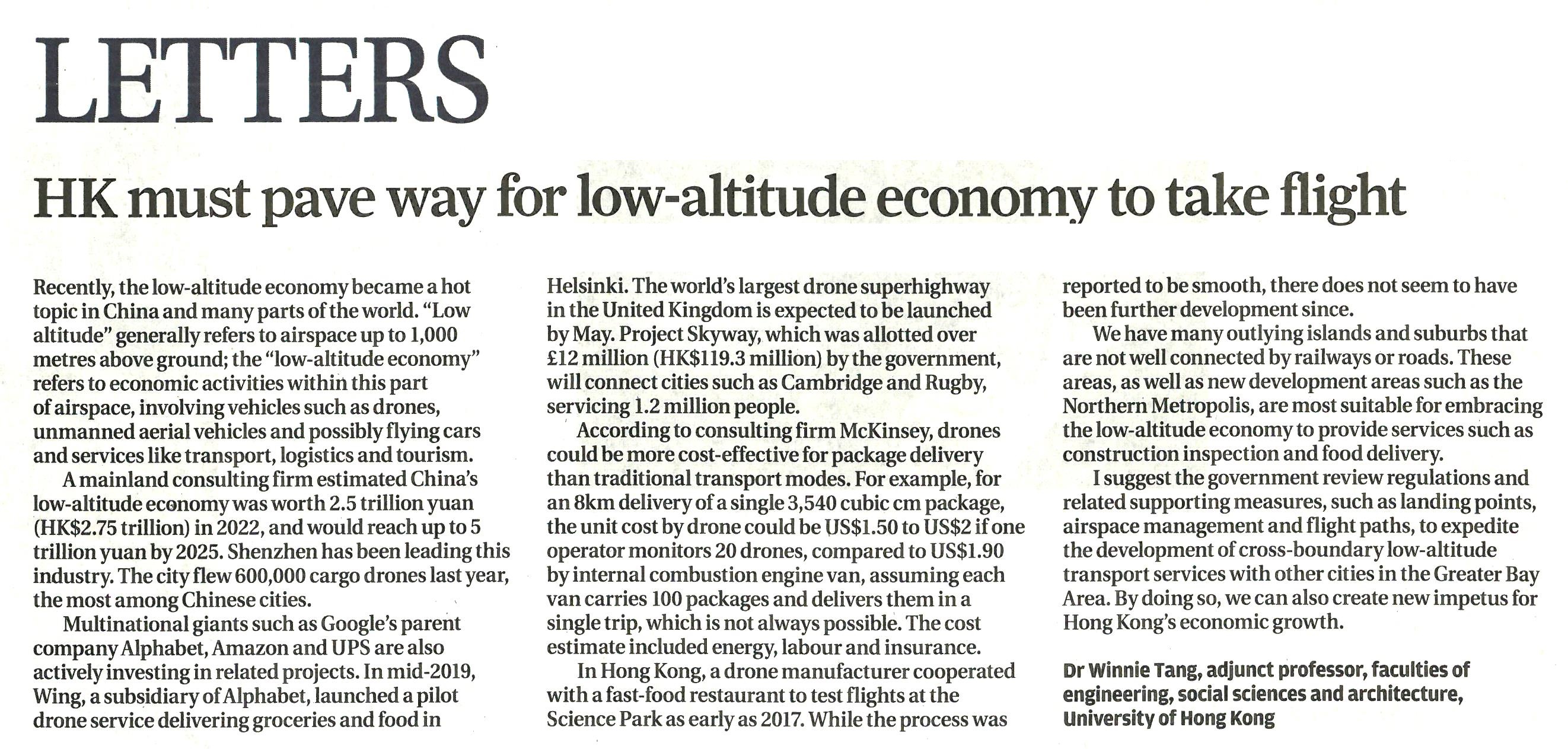網上版請按此

HK must pave way for low-altitude economy to take flight
Recently, the low-altitude economy became a hot topic in China and many parts of the world. "Low altitude" generally refers to airspace up to 1,000 metres above ground; the "low-altitude economy" refers to economic activities within this part of airspace, involving vehicles such as drones, unmanned aerial vehicles and possibly flying cars and services like transport, logistics and tourism.
A mainland consulting firm estimated China's low-altitude economy was worth 2.5 trillion yuan (HK$2.75 trillion) in 2022, and would reach up to 5 trillion yuan by 2025. Shenzhen has been leading this industry. The city flew 600,000 cargo drones last year, the most among Chinese cities.
Multinational giants such as Google's parent company Alphabet, Amazon and UPS are also actively investing in related projects. In mid-2019, Wing, a subsidiary of Alphabet, launched a pilot drone service delivering groceries and food in Helsinki. The world’s largest drone superhighway in the United Kingdom is expected to be launched by May. Project Skyway, which was allotted over £12 million (HK$119.3 million) by the government, will connect cities such as Cambridge and Rugby, servicing 1.2 million people.
According to consulting firm McKinsey, drones could be more cost-effective for package delivery than traditional transport modes. For example, for an 8km delivery of a single 3,540 cubic cm package, the unit cost by drone could be US$1.50 to US$2 if one operator monitors 20 drones, compared to US$1.90 by internal combustion engine van, assuming each van carries 100 packages and delivers them in a single trip, which is not always possible. The cost estimate included energy, labour and insurance.
In Hong Kong, a drone manufacturer cooperated with a fast-food restaurant to test flights at the Science Park as early as 2017. While the process was reported to be smooth, there does not seem to have been further development since.
We have many outlying islands and suburbs that are not well connected by railways or roads. These areas, as well as new development areas such as the Northern Metropolis, are most suitable for embracing the low-altitude economy to provide services such as construction inspection and food delivery.
I suggest the government review regulations and related supporting measures, such as landing points, airspace management and flight paths, to expedite the development of cross-boundary low-altitude transport services with other cities in the Greater Bay Area. By doing so, we can also create new impetus for Hong Kong's economic growth.
Dr. Winnie Tang
Adjunct Professor, Department of Computer Science, Faculty of Engineering; Department of Geography, Faculty of Social Sciences; and Faculty of Architecture, The University of Hong Kong